Cuando a tu hijo le hacen bullying//When your child is bullied [ESP-ENG]
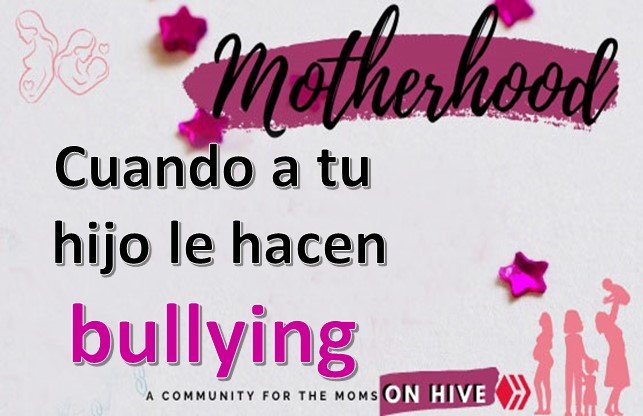
En alguna oportunidad leí que el bullying siempre ha existido. El argumento del comentario era que entre muchachos y compañeros cuando a alguno le sucede algo fuera de lo común o comete un error, venía inmediatamente la burla, lo que nosotros los venezolanos llamamos el chalequeo.
Y es verdad, seguro que en algún momento algún compañero de estudio alguien comenzó a burlarse de ti por algo. Yo recuerdo a un querido compañero que en una oportunidad fui a clase con unos botines de cuero tejido y el comenzó a decir: llego Peter Pan, eso bastó para que comenzara el chalequeo.
Me imagino que aburrido en clase se le ocurrió dibujarme en una hoja resaltando los botines y una frase que decía: — Escríbele a Peter. Escribieron cualquier barbaridad, hasta que el papel llegó a mí, mi cara de asombro les dio más risas y todo se diluyó en un juego, si se quiere, tonto.
Allí es donde radica la diferencia: el chalequeo es momentáneo, pasajero mientras que el bullying, por el contrario, es constante, acosador, se va fortaleciendo en el tiempo volviéndose más agresivo y genera en la persona que lo vive: ansiedad, impotencia, retraimiento y rechazo al lugar donde se produce, generalmente, la escuela.
No es que el chalequeo este bien y el bullying este mal. No, no se trata de eso, de entrada, las dos son formas de irrespeto, solo que la primera no deja de ser una broma de mal gusto sin consecuencias mientras que la segunda afecta la vida de la persona.
I once read that bullying has always existed. The argument of the commentary was that among kids and classmates when something out of the ordinary happens to someone or he makes a mistake, immediately comes the mockery, what we Venezuelans call "chalequeo".
And it's true, I'm sure that at some point a fellow student began to make fun of you for something. I remember a dear classmate who once went to class with a pair of woven leather booties and he started to say: Peter Pan is here, that was enough to start the chalequeo.
I imagine that bored in class he came up with the idea of drawing me on a sheet of paper highlighting the booties and a sentence that said: - Write to Peter. They wrote any barbarity, until the paper reached me, my astonished face gave them more laughter and everything was diluted in a game, if you will, silly.
That is where the difference lies: bullying is momentary, transient while bullying, on the contrary, is constant, harassing, gets stronger over time becoming more aggressive and generates in the person who lives it: anxiety, helplessness, withdrawal and rejection to the place where it occurs, usually the school.
It is not that bullying is right and bullying is wrong. No, that is not the case, both are forms of disrespect, only that the first is a bad joke without consequences while the second affects the life of the person.
Un problema a resolver
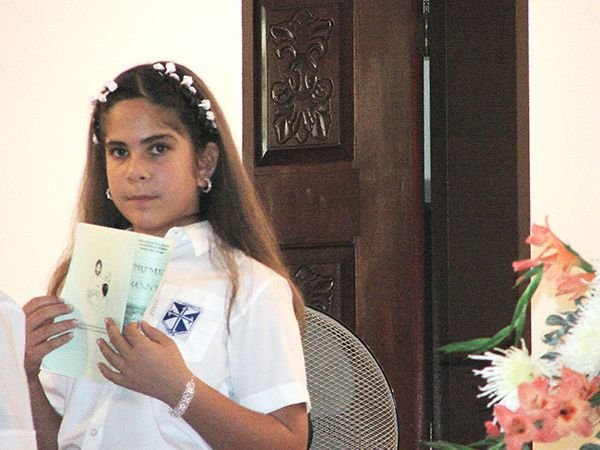
Cuando nuestro hijo/hija se convierte en blanco de bullying es algo que nos duele de manera muy profunda. Saber y sentir el malestar e incluso el sufrimiento de tu hijo por una situación, que no tiene razón de ser y que está más relacionada con las carencias de quien las produce, no siempre es fácil de manejar.
Como padres es casi una reacción impulsiva querer poner fin a la situación, cortarla de raíz, sin embargo, no necesariamente tiene que ser así, podemos darle la oportunidad a nuestros hijos para que resuelvan la situación por sus propios medios y fortalecer su confianza antes de intervenir. Si, el asunto, no se soluciona hay ir avanzando en las alternativas es lo más apropiado. Te cuento mí experiencia.
Mi hija siempre ha sido una muchacha tranquila y respetuosa. Cuando estaba en séptimo grado (11 años de edad) otra adolescente de noveno grado (13 años) que estudiaba en el mismo colegio, comenzó a meterse con ella. La burla consistía en llamarla por el nombre de una muñequita de dibujos animados. La muñequita en cuestión era rubia y muy graciosa.
Un día cuando recogí a mi hija en el colegio, sube al carro furiosa y me echo el cuento, yo quitándole peso al asunto, le decía: — Pero, si es una muñeca ¿Por qué te molesta tanto?
— Porque no lo hace por bien sino burlándose.
Pensando que era algo pasajero, solo traté de consolarla y hacerle ver que la situación, no era tan grave. Pero cada día mi hija entraba al carro más molesta y frustrada ya habíamos intentado varias cosas: ella habló con la muchacha y esta aumentó sus burlas. Mi niña tenía la ventaja que la situación no era dentro del salón y sus amigos y compañeros, que estudiaban juntos desde el preescolar, la apoyaban.
En varias oportunidades le dije que iba a hablar con la profesora jefe de seccional, ella con horror me decía que no, que iba a ser peor. Viendo que el problema iba creciendo tomé la decisión de hablar con la adolescente. La oportunidad se presentó pronto porque había un acto escolar, donde participaban todos los alumnos del colegio.
Le pedí a una de las amiguitas de mi hija que me ayudara a ubicar a la muchacha cuando la encontramos en las gradas, me fui hasta el sitio, le pedí a la compañera que estaba junto a ella, que me diera puesto y me le senté al lado, le dije, si mal no recuerdo, algo así:
—Mira, soy la mamá de Indira, la niña que tu molestas constantemente, dime ¿Con quién tengo que hablar para que la dejes tranquila y respetes? La niña se sintió apabullada, debo reconocerlo, no fueron palabras pronunciadas con cariño ni de buenas maneras, era la madre molesta, protegiendo a su hija y dejando claro que ¡Ya no más!
Ella lo quiso negar, pero yo no estaba para treguas, no la deje hablar solo le dije que ya tenía el teléfono de su mamá y qué si volvía a molestar a mi hija, llamaría a su madre para que la controlara y si su mamá tampoco sabía educarla, pasaría el caso a la dirección del colegio. Eso fue suficiente para terminar el problema. Mi hija, cuando se enteró no estaba muy conforme, pero sé que se sintió aliviada.
A problem to be solved

When our son/daughter becomes a target of bullying, it is something that hurts us deeply. Knowing and feeling the discomfort and even the suffering of your child because of a situation, which has no reason to exist and is more related to the shortcomings of the person who produces it, is not always easy to handle.
As parents it is almost an impulsive reaction to want to put an end to the situation, to nip it in the bud, however, it does not necessarily have to be this way, we can give our children the opportunity to resolve the situation by their own means and strengthen their confidence before intervening. If the matter is not solved, we have to move forward with alternatives, I think that is the most appropriate thing to do. I will tell you about my experience.
My daughter has always been a quiet and respectful girl. When she was in seventh grade (11 years old) another teenager in ninth grade (13 years old) who studied at the same school, began to tease her. The teasing consisted of calling her by the name of a little cartoon doll. The doll in question was blonde and very funny.
One day when I picked up my daughter from school, she got into the car furious and told me the story, I took the weight off the matter and said: - But, if it is a doll, why does it bother you so much?
-Because she doesn't do it for the sake of it, but to make fun of it.
Thinking that it was something temporary, I just tried to console her and make her see that the situation was not so serious. But every day my daughter entered the car more annoyed and frustrated. We had already tried several things: she talked to the girl and she increased her teasing. My daughter had the advantage that the situation was not inside the classroom and her friends and classmates, who had studied together since preschool, supported her.
On several occasions I told her that I was going to talk to the head teacher, but she was horrified and said no, that it would be worse. Seeing that the problem was growing, I decided to talk to the teenager. The opportunity came soon because there was a school event, where all the students of the school participated.
I asked one of my daughter's friends to help me locate the girl when we found her in the bleachers, I went to the place, I asked the classmate who was next to her to give me a seat and I sat down next to her, I said, if I remember correctly, something like this:
-Look, I am Indira's mother, the girl that you constantly bother, tell me who do I have to talk to so that you leave her alone and respect her? The girl felt overwhelmed, I must admit it, they were not words pronounced with affection or in good manners, it was the annoying mother, protecting her daughter and making it clear that no more!
She wanted to deny it, but I was not for truces, I did not let her talk, I just told her that I already had her mother's phone number and that if she bothered my daughter again, I would call her mother to control her and her mother did not know how to educate her either, I would pass the case to the school management. That was enough to end the problem. My daughter, when she found out, was not very happy, but I know she was relieved.
El que lo hace y quién lo recibe
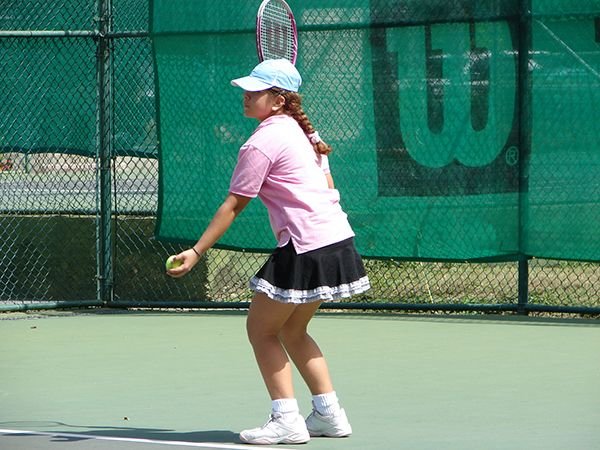
Muchas veces los muchachos agarran tanto temor que no quieren que uno intervenga aún, cuando no saben cómo resolver la situación. Como padres, no estamos dispuestos a dejar que alguien venga a maltratar a nuestros hijos. Pienso que hay que ir evaluando cómo evoluciona la problemática y mientras más pronto intervengamos es mejor, porque no sabemos hasta donde la situación puede afectar al niño.
En lo particular siento que la vivencia de mi hija la marcó y prefiero pensar que fue de manera positiva. A partir de allí comenzó a buscar respuestas ¿Por qué las personas actúan así y por qué los otros se dejan? Esas interrogantes, más el contacto con un grupo de estudio de filosofía, donde papá y mamá participaban, y en el cual había profesores, psicólogos, sociólogos, entre otros profesionales, la fue llevando a querer se psicóloga. Su proyecto final para graduarse de bachiller fue sobre el bullying y hoy en día es psicóloga infantil.
El bullying se ha convertido en un gran problema social dentro y fuera de las aulas de clase, la literatura es abundante y uno de los puntos donde más se afianza la explicación del niño que hace bullying se encuentra en las relaciones dentro del hogar, las carencias o problemas que se gestan allí.
Como docente he conocido padres que aúpan la conducta agresiva y abusiva de sus hijos y de hecho son adultos abusivos, sin embargo, también hay padres que se sorprenden al encontrar y reconocer dichas conductas, tomar las medidas adecuadas siempre tendrá que ver con la personalidad y madurez del niño.
Hace unos años, hubo un caso que se hizo famoso, te dejo el link de la noticia. Un niño de 10 años al que le había llamado la atención, en diversas oportunidades, por hacer bullying a un compañero en el autobús escolar fue suspendido por tres días del transporte. El padre, como medida correctiva, hizo que el niño fuese de la casa al colegio trotando, mientras él iba con la hija en el carro custodiando al niño. Compartió el vídeo con sus amigos y de allí paso a las redes.
Llovieron miles de comentarios unos a favor y otros en contra, hubo quienes aseguraron que eso era maltrato infantil y que al colocarlo en las redes el padre estaba haciéndole bullying al hijo.
En ambos casos tanto el niño que hace bullying como el niño que lo recibe requieren de orientación y toma de acción por parte de los padres y docentes, sin perder de vista, como todo lo que tiene que ver con los niños y adolescentes que no hay recetas.
Un punto que nos puede guiar en nuestras acciones es conocer la personalidad y la sensibilidad de nuestros hijos para que la medidas que tomemos no sean más dañinas que el hecho que las produce.
Who does it and who receives it
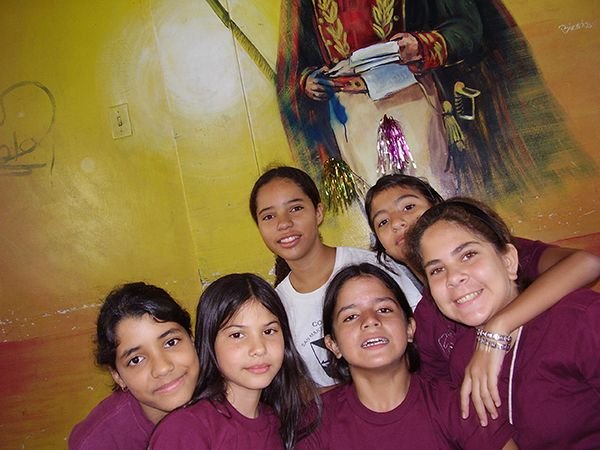
Many times the kids are so afraid that they don't want you to intervene even when they don't know how to resolve the situation. As parents, we are not willing to let someone come to mistreat our children. I think we have to evaluate how the problem evolves and the sooner we intervene the better, because we don't know how far the situation can affect the child.
In particular, I feel that my daughter's experience marked her and I prefer to think that it was in a positive way. From then on, she began to look for answers: Why do people act like that and why do others let themselves be? These questions, plus the contact with a philosophy study group, where mom and dad participated, and in which there were professors, psychologists, sociologists, among other professionals, led her to want to become a psychologist. Her final project for her bachelor's degree was on bullying and today she is a child psychologist.
Bullying has become a major social problem inside and outside the classroom, the literature is abundant and one of the points where the explanation of the child who does bullying is more strengthened is in the relationships within the home, the shortcomings or problems that arise there.
As a teacher I have known parents who support the aggressive and abusive behavior of their children and in fact are abusive adults, however, there are also parents who are surprised to find and recognize such behaviors, taking appropriate measures will always have to do with the personality and maturity of the child.
A few years ago, there was a case that became famous, I leave you the link to the news. A 10 year old boy who had been called to attention, on several occasions, for bullying a classmate on the school bus was suspended for three days from transportation. The father, as a corrective measure, made the boy go from home to school jogging, while he went with his daughter in the car guarding the child. He shared the video with his friends and from there it went to the networks.
Thousands of comments rained down, some in favor and others against, there were those who said that this was child abuse and that by posting it on the networks the father was bullying his son.
In both cases, both the child who does bullying and the child who receives it require guidance and action by parents and teachers, without losing sight, as everything that has to do with children and adolescents, that there are no recipes.
A point that can guide us in our actions is to know the personality and sensitivity of our children so that the measures we take are not more harmful than the fact that produces them.
Translated with www.DeepL.com/Translator (free version)
Imágenes: Archivo personal



MIS REDES SOCIALES




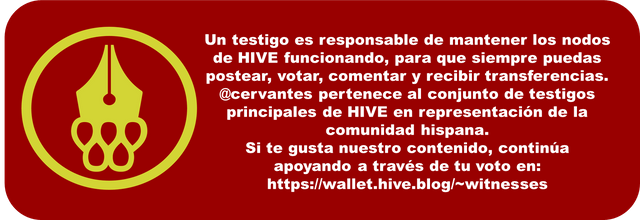
Te invito a apoyar este proyecto como witnes y a formar parte de esta gran comunidad uniéndote a su Discord en el siguiente enlace:
Discord de la comunidad Cervantes




Hola @damarysvibra me encanta este tema y la manera inteligente que detuviste el acoso que sufría tu hija, desde mi perspectiva detrás de un niño o niña agresor existe un ser humano que está siendo agredido por algún adulto significante para él, también hay dolor y la forma de descarga es causar molestia o dolor a otro que se muestre vulnerable a su vista. Además en esta anédocta observo como tu hija utilizo su experiencia y la uso como fuente de transformación de un hecho traumatico para ser un ente de ayuda y contención para quienes lo necesiten
Hola @devania, la verdad es que mi primera intención era ir al colegio, me sentía tan molesta, dos cosas me pararon, qué quería mi hija que hiciera y como maestra se que a uno muchas cosas se nos escapan de las manos.
Me alegré mucho haber acertado con la acción.
Con respecto a mi hija su pasión son los niños y lo que sienten, eso me conmueve mucho porque ella dice que esas son unas cabecitas que casi nadie quiere escuchar 🤗
Me encantó cómo tomaste el asunto, primero dejando que tu hija lo solucionara y después hablando con esa niña. Te cuento que yo sufrí de bullying hasta los 15 años y fue lo más horrible de mi vida, me marcó para siempre y hasta la fecha no puedo superarlo, aún me siento cohibida algunas veces, pero yo no tenía esa confianza ni apoyo con mi familia para salir de eso, ni siquiera contarles, cierta vez lo supieron por una amiga mía y sólo me regañaron porque 'no les dije nada' 😳 y aún sabiendolo todo siguió igual... me alegra saber que ayudaste a tu hija y que ella confió en ti para contarte, hiciste muy bien ☺️
@judithvlogs muchas veces los padres no tenemos herramientas para afrontar ciertas situaciones que se nos presentan con los hijos, mi esposo dice, que antes de tener un hijo cada quien debería hacer un curso de psicología infantil 😉
Yo pienso que lo más importante es escuchar con atención, sus tonos, gestos, actitudes, acciones nos van orientando para acercarnos acertadamente a lo que sienten y quieren.
Lo cierto es que bullying puede dejar huellas muy profundas como tú misma lo has sentido, yo como coach te diría, acéptalo y vamos a trabajar de aquí en adelante como sentirte mejor, un psicólogo te diría, algo más o menos como: vamos a profundizar en lo que sientes para comprender y avanzar, son dos opciones válidas y que lo importante es reconocer que nos producen limitaciones para tratar de superarlas y ese camino ya lo tienes andado.
Saludos, gracias por tu comentario y apoyo.